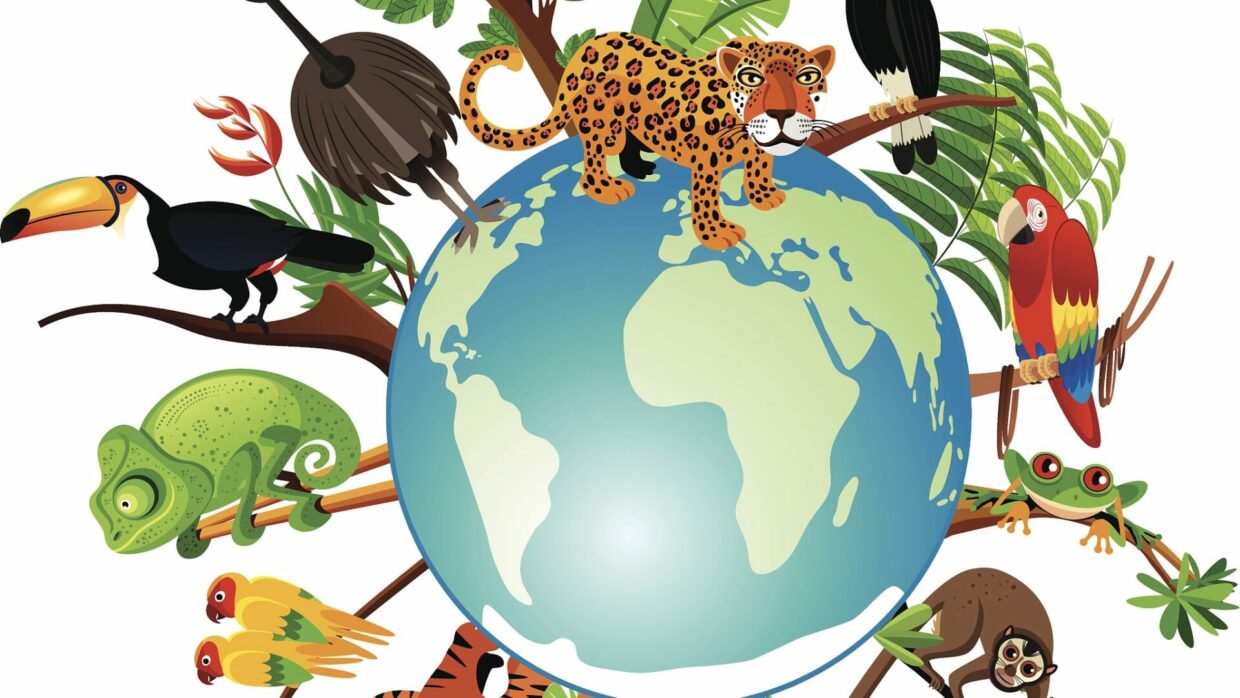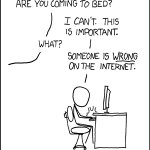
I’ve been thinking quite a bit about the disappointing, but not unexpected, outcome of Happy the Elephant’s case. Taken with similar attempts to imbue animals with legal personhood, this can induce a lot of despair: fringe legal philosophies have not produced the change we’re hoping for.
But perhaps there is another way to go, which learns from contemplative and deep ecological perspectives. At 5:30am on election day I rode my bike to the polls and was treated to a magnificent dawn chorus of San Francisco’s diverse and colorful bird population. A thought flew through my mind: The birds don’t know and don’t care that there is an election today. Much of what we will vote on (transit, construction, garbage collection) will directly affect their lives, but they are not involved in this process–they live adjacent to it, oblivious of what it may bring in its wings. Who will speak for their interests at this election?
I’m obviously not the first person to introduce contemplative practices into ecology and animal rights. In their 1988 book Thinking Like a Mountain: Toward a Council of All Beings, John Seed, Joanna Macy, Pat Flemming and Arne Naess propose a blueprint for human decisionmaking that takes all perspectives in mind. Through transformative, contemplative practices, a Council of All Beings invites humans to deeply adopt and articulate the perspectives of nonhuman entities in decisionmaking. I participated in one such Council as part of a facilitator training; I spoke for a mushroom and some of my fellow participants spoke for parrots, rocks, and blades of grass. It was a profound immersion in the interests, if they can be called that, of nonhuman entities.
This transcendent notion of perspective taking has migrated from deep ecological theory to the legal realm, with some expressing optimism for its potential for transformation. In his article We Are the River, my colleague and friend David Takacs offers some examples: The New Zealand Parliament has recently granted the Whanganui River and the Te Urewera mountain ecosystem rights as legal persons, with a Māori governing board to speak for the nonhuman entities, based upon traditional cultural precepts. Similarly, governments in Australia, Colombia, Ecuador, Bangladesh, India, Uganda, and the U.S. have also declared that rivers and other living systems have legal rights. While these initiatives stem from disparate historical, philosophical, and legal backgrounds, and pursue disparate goals, they all seek to enshrine in the law the fundamental symbiosis between human and nonhuman ecological health, and to empower suitable stewards who will nurture that symbiosis. As Takacs explains, newly vested spokespersons for nature–often indigenous populations, who savvily position themselves as more authentically empowered to speak for natural entities–can, and sometimes do, turn novel legal theories into real legal work that protects human and nonhuman communities.
So, perhaps the solution to our failure to effect real change through animal personhood is to eschew performative (often prosecutorial and anthropomorphized) rhetoric on behalf of animals and give some careful thought, through discerning political considerations and contemplative experiences, to two important questions: what are the genuine interests of nonhuman animals and who should be vested with the authority to represent these interests? As I explained here and here, and as Justin Marceau explains so well here, deep engagement with the true interests of nonhuman animals does not and should not include a reliance on incarceration. The answer, perhaps, is that criminal courtrooms are not the right places for deep, thoughtful perspective-taking. This is not to say that meditative retreats or multiparty government meetings would be completely free of anthropomorphism: any humans speaking for nonhuman entities necessarily translate very different lives to their own into human terms and might, manipulatively or carelessly, twist or convert these into their own interest. This is why it is essential to identify speakers for animals who are truly curious, knowledgeable, and sincere.
When we understand on a deep level what animals want (they are more similar to us than we might think, as Larry Carbone explains in his treatise on laboratory animals), the solutions are up to us. Bruce Friedrich of the Good Food Institute often explains that the true solution to the horrors of factory farming lie at least partly in the hands of the market: we must create substitutes to animal products that taste the same or better, and cost the same or are cheaper. Would factory farmed animals provide us with this solution? Naturally not. This is an entirely human solution, derived from an entirely human conceptual world, for the genuine problem nonhuman animals face–the horrific reality of exploitation and torture that is the CAPO industry. What Friedrich’s solution shows us is that, when we set out to comprehend the unmediated experience of our fellow living beings, with as little imposition of our own agendas on it as possible, we can then fashion human solutions to these problems. I resolved to participate in (human) elections and vote on measures that humans introduced, and on human candidates, while “thinking like a mountain” at the ballot box.
But we can find even more uses for thinking like a community, such as in physical and mental health matters. Recently, I read and enjoyed Will Bulsiewicz’s Fiber Fueled and listened to this podcast with him, in which he explained that we should think of our eating habits as eating not just for ourselves, but for a whole community including trillions of microbes. What I eat is for them as much as it is for me, or for whatever “me” is (not that easy to parse, with so many microbes in the mix, right?) So, when you crave a mountain of nutrition-empty things, consider that there’s an emotional aspect of “you” who wants them, while there are many aspects of “you” – the physical, biological, mental “you”, that needs other things. Think of the cliché of pregnant women “eating for two:” we’re all eating for trillions.
There’s also a psychological aspect to this: I’m enjoying Richard Schwartz’s No Bad Parts, an excellent introduction to family systems theory in psychology, which is all about the notion that we contain multitudes. It is useful to give a voice to neglected parts of the self, even if one believes there’s some “core self” (a better fit for western psychology than for Buddhist psychology.)
Next time you’re involved in decisionmaking, for yourself or for others, try thinking like a community and see how it feels.




No comment yet, add your voice below!